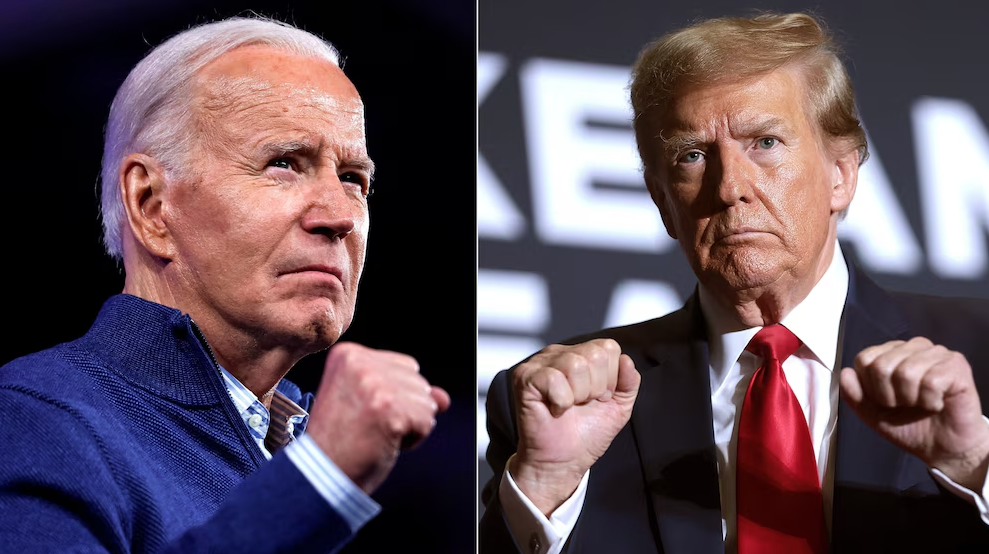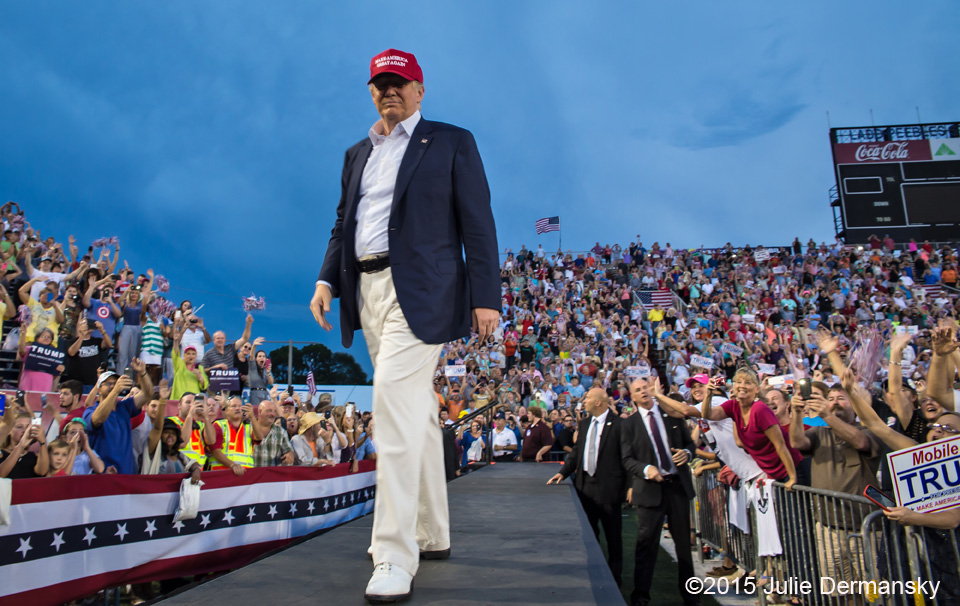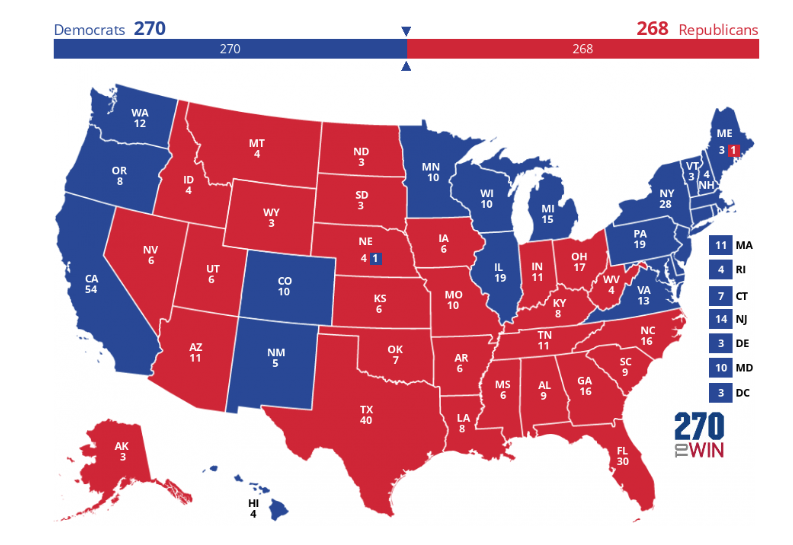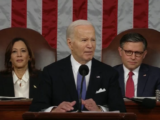By Glynn Wilson –
Public Opinion Analyst –
WASHINGTON, D.C. — Are you tired of seeing these headlines saying challenger Donald Trump is leading President Joe Biden in the polls with less than six months to go before the presidential election of 2024?
Are you sick of these stories bashing Biden for his age, and blaming the poll numbers on Biden for “not doing enough to get his message out?”
Me too.
So let’s set the record straight.
At least since Christmas 2023, the New York Times chief political analyst, Nate Cohn – who covers elections, public opinion, demographics and polling – the sensational headlines have come almost non-stop, implying that Trump is on track to win in November, and that Biden is losing and there’s nothing we can do about it but pray.
Keep in mind this is the guy who famously said with only a couple of weeks to go before the 2016 election, and was quoted all over, that “she’s got this,” indicating that Hillary Clinton was leading by enough of a margin in the polls to win the day in November. She did win the popular vote, by 2.1 percentage points. But she did not carry the Electoral College, and Trump was on his way to the White House. Pollsters had egg all over their faces.
But after you get past all that sensational clickbait, there is another story. It turns out these poll numbers are based on interviews with Americans who aren’t paying close attention to news about politics, say they don’t follow traditional news, and who don’t regularly vote.
The Shaky Foundation of Trump’s Lead: Disengaged Voters
“… there’s one big flashing warning sign suggesting that (Trump’s) advantage might not be quite as stable as it looks,” the Times reports.
So if disengaged voters are driving the overall polling results and the story line about the election, why is the Times relying on the behavior of these non-active voters to inform the public about where we are? Polls are only one snapshot of public opinion at any given moment in time.
“President Biden has actually led the last three Times/Siena national polls among those who voted in the 2020 election,” the Times finally reports, “… almost all of Mr. Trump’s gains have come from these less engaged voters.”
Trump’s “dependence on disengaged voters makes it easy to imagine how it could quickly become more volatile. As voters tune in over the next six months, there’s a chance that disengaged but traditionally Democratic voters could revert to their usual partisan leanings. Alternately, many of these disaffected voters might ultimately stay home, which might help Mr. Biden.”
Low-turnout voters are less likely to respond to political surveys, which became an issue in the 1990s that we called “stealth campaigns” when the likes of Republican Fob James in Alabama was getting more support than polls showed. So pollsters started trying to figure out ways to weight their polls to take these voters into account, and some experts believe they over compensated, including me.
As Cohn says, “a typical political survey would probably underestimate Mr. Trump without steps to reach the proper share of irregular voters. (We make every effort to account for this in our polling.)”
The good news here is, lower-turnout voters are less likely to vote, so Biden should be favored “if enough of his disengaged defectors stay home.”
As I have already reported, voter turnout in 2024 will likely not match the record percentages of voters who turned out in 2020 to elevate Biden and stop Trump from a second term.
Cohn finally admits this.
“There are good reasons to expect fewer voters in 2024 than in recent cycles, as the 2020 election was the highest-turnout election in a century,” he says.
“Democrats have benefited from what we’ve called a ‘hidden’ turnout advantage,” he says, “a tendency for Democratic-leaners who vote to be more anti-Trump than those who stay home.”
Democratic-leaning nonvoters who backed Biden were 20 percentage points more likely to say they were “almost certain” or “very likely” to vote than those who preferred Trump.
Misleading Reporting
As an educated and trained public opinion survey researcher who has covered public opinion for newspapers and news sites for nearly 40 years, I must say that I learned a long time ago that when an election is within the margin of error, the correct way to report on it is to say it is “too close to call.”
So according to 538’s newly released polling averages, this election is too close to call.
But even at 538, which publishes its results through ABC News, they report it wrong.
“Former President Donald Trump narrowly leads President Joe Biden, 41.2 percent to 40.5 percent, in national polls (as of Wednesday at 1:30 p.m. Eastern).”
Also, unethically, they fail to report the margin of error in the polls they are citing. Typically the margin of error is plus or minus 3 to 5 percentage points. The polling averages with two weeks to go before the election in 2016 showed Clinton leading by about 3 points, still within the margin of error. The Los Angeles Times had a poll that was considered an outlier showing Trump leading by 7 points, outside the margin of error.
That’s one reason myself and David Underhill at the New American Journal warned people that Trump could very well come out on top on Election Day. We saw all those working people turn out at his first stadium rally in Mobile, Alabama, with their Roll Tide Alabama jerseys, stadium seats and MAGA caps. They were fascinated by the famous businessman from reality TV.
Trump did not win the popular vote. He won the Electoral College because Black, male voters in urban areas in the Midwest either voted for Trump or did not show up to vote for Secretary of State Hillary Clinton. She won the popular vote by 2.1 points, but she lost the tipping-point state, again Wisconsin, by 0.8 points.
In 2020, Biden won the national popular vote by 4.5 percentage points, but he also won Wisconsin — the state that tipped him over the 270 electoral votes he needed to win. But only by 0.6 points.
While Biden is trailing (within the margin of error) in the most competitive states, he remains within striking distance of Trump in states with just enough electoral votes to hand him the presidency. Seven states are considered to be competitive this fall. In Michigan, Pennsylvania and Wisconsin, Biden trails Trump by less than 2 points. In Georgia, Nevada and North Carolina, Trump leads by a more comfortable 6- or 7-point margin. In Arizona, Trump is leading by 3.5 percent.
But remember, these polls are weighted to make sure Trump voters are included whether they will actually show up and vote in November or not.
“… the numbers also point to a narrow but feasible path for Biden to win,” according to 538. “If he carries Michigan, Pennsylvania and Wisconsin, plus every other state and district* that he won by at least 6 points in 2020, he would finish with exactly 270 electoral votes.”
“That’s well within the realm of possibility,” analysts say. “To reach that threshold, Biden would just need to gain 2 points in our polling averages of those three states between now and November, which is not a very big lift. Plus, it’s within the margin of reasonable polling error; even polls on the eve of the election have an average error of 4 points in presidential elections. Ultimately, state-level polls 174 days before the election have historically missed the final vote margin by about 8 points.”
So it could be that Biden is actually leading by five points, if these Trump non-engaged voters don’t show up to vote, and the disgruntled Democrats don’t show up to vote for Trump either.
Yet “Democrats should face no illusions about the task ahead of them,” they say. “Winning Michigan, Pennsylvania and Wisconsin will require Biden to proactively improve in the polls… This path also leaves the campaign no margin for error: If Biden loses just one of those three states, he’d need to carry one or more of the more challenging Sun Belt states to make up for it.”
One Further Wrinkle
“Getting to 270 electoral votes via Michigan, Pennsylvania and Wisconsin would also require Biden to win the electoral vote from Nebraska’s 2nd Congressional District, which Biden won by only 6 points in 2020 … Polls of Nebraska’s 2nd District are scarce, but the one we do have suggests that Trump is leading there right now.”
If Trump wins Nebraska’s 2nd while Biden wins Michigan, Pennsylvania and Wisconsin, the Electoral College would be tied 269-269.
Under the Constitution, that would throw the election to the House of Representatives, where each state’s delegation (not each representative) would get one vote, with 26 out of 50 votes needed to elect the president.
“Trump would very likely win under such a scenario because Republicans will probably control a majority of congressional delegations after the election, even if they don’t have an overall House majority,” 538 concludes.
The House hasn’t needed to step in to decide the presidential election since 1824, but the way the electoral map is shaping up, there is a chance it could happen this year. Let’s hope not.
Getting the Message Out
There are a number of stories claiming Biden is not doing a good job of getting his message out. That’s a major talking point on cable TV news talk. But as I pointed out to another editor at the Times this week, perhaps this is not so much Biden’s fault, but the media’s fault.
Since successfully passing a $1.2 trillion infrastructure investment bill through Congress in 2021, it has taken many months for federal agencies to plan how to spend their part of the money.
Congressional Passage of the $1.2 Trillion Infrastructure Investment and Jobs Act is Huge
Here at the New American Journal, we have endeavored to document this federal spending by running story after story about the millions of dollars being spent all over the country to fix roads, bridges and trails, shore up water systems, and provide high paying union jobs as well.
149 search results for “Infrastructure bill”
Have you seen any of these stories in any of the news sites you depend on for news, or social media feeds you pay attention too? Probably not, because allocating the money for a new bridge is not as sexy as a story about a bridge collapsing, so does not get the same level of media coverage. Plus, it takes four years to build a bridge, and since people may not be seeing the concrete outcome in their communities, they have no idea anything is going on there.
Which might be partly responsible for the disconnect between the actual performance of the economy, with low unemployment and a booming stock market, and what the public reports to pollsters when they express disgruntlement with the economy, which does seem to remain a dominant issue to survey research respondents. Prices and inflation are up at least in part due to the federal government spending during the pandemic and since, but wages are also up and unions are on the march all over the country.
What matters is how people feel in October. It’s too early to say on that. But one thing is for sure. Trump is not winning this election. It is too close to call.
___
Glynn Wilson is an expert on public opinion as an academic researcher and a journalist. He minored in Political Science with a major in Journalism and Communications at the University of Alabama in an undergraduate BA program back in the early 1980s, where he took every class offered related to this specialty. He also spent some time working with the Capstone Poll in those days, run by Political Science Professor Pat Cotter, and journalism professor Jim Stovall. He covered public opinion for newspapers after that for 10 years as part of the beat of covering public affairs and politics, including elections. He then went back to grad school at UA in the mid-1990s. One of his graduate research jobs was to oversee the public opinion lab in the College of Communications, also under the leadership of Stovall and Cotter, who conducted most of the political election polls in Alabama for a couple of decades. Wilson’s academic research specialty was in the area of media effects on public opinion. He later worked toward a Ph.D. in this research, but rather than continue teaching and jump through the final hoop of defending a dissertation at the University of Tennessee, he opted to go back into the news business working for The Dallas Morning News, The New York Times and other publications. He went independent on the web in 2005, and has covered public opinion ever since as one of his many specialty beats.
His Master’s Thesis was a ground breaking study at the time, showing a statistical correlation between media coverage of the environment and public concern for the environment.
Public Attitudes and Press Coverage of the Environment, 1968-1996
___
If you support truth in reporting with no paywall, and fearless writing with no popup ads or sponsored content, consider making a contribution today with GoFundMe or Patreon or PayPal.
















